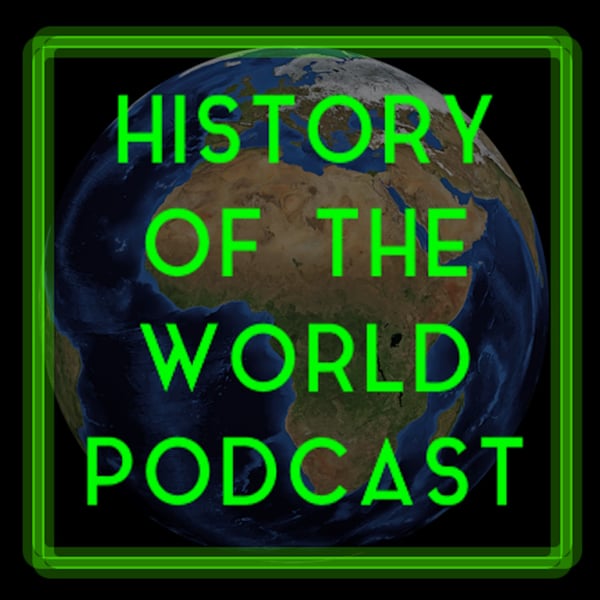Vol 4 Ep 54 - SUMMARY - Medieval Europe, Part One
History of the World podcast
Chris Hasler
4.8 • 971 Ratings
🗓️ 17 April 2023
⏱️ 38 minutes
🧾️ Download transcript
Summary
600 - 1085 - The modern nations of Europe begin to emerge as populations civilise, populate and Christianise. The Papacy becomes central to European politics.
--- Send in a voice message: https://podcasters.spotify.com/pod/show/historyoftheworldpodcast/messageTranscript
Click on a timestamp to play from that location
| 0:00.0 | The History of the World Podcast, written and presented by Chris Hasler |
| 0:20.8 | Volume 4 The Medieval World |
| 0:25.0 | Episode 54 A Summary of Medieval Europe Part 1. We do. We begin our eventful story of medieval Europe from the year 600. |
| 1:00.0 | Western Continental Europe was dominated by the Franks of Germanic peoples. |
| 1:06.0 | The southeast of Europe was dominated by the Byzantine's. |
| 1:10.0 | The Byzantine's had land interests on the Italian Peninsula, but they were involved in a bitter |
| 1:17.9 | feud with the Lombards, a Germanic nation attempting to establish themselves somewhere in Europe. |
| 1:26.2 | The Byzantine's also had interests on the Iberian Peninsula, a region dominated by the Germanic peoples called the Visigoths. |
| 1:37.0 | People's with Celtic heritage were being pushed westwards on the British Isles |
| 1:41.0 | by Germanic migrants in the form of Angles and Saxons. |
| 1:47.0 | Scandinavia contained North Germanic peoples who were somewhat related to the continental Germanic peoples, who were somewhat related to the continental Germanic peoples, but were much more |
| 1:56.1 | tribal in their politics, similar to the Baltophonic people of the modern lands of Finland, the Baltic peoples of northeast Europe, and the |
| 2:07.4 | Slavic peoples of Eastern Europe. A westward expansion of Eurasian step nomads referred to by the name Avars |
| 2:16.7 | were also reaching deep into the European continent from the east. |
| 2:21.8 | And this was the condition of Europe entering the seventh |
| 2:27.0 | century. Despite the fall of Western Rome over a hundred years earlier, Europe was still a center |
| 2:34.8 | for learning and development. |
| 2:37.9 | Various monastic movements and church clergymen would be the new polymaths and scholars of Europe. So not only were the Greek-speaking Byzantine lands continuing the tradition of learning and education that it was so well known for in the classical age. |
| 2:54.8 | But now the Christian communities of Europe such as the British Isles, the lands of the |
| 2:59.2 | Franks and the Iberian Peninsula were also involved in producing written scientific records. |
| 3:07.0 | The easternmost lands of the Byzantine's came under threat from the Persians and then the Islamized The Byzantine Emperor Heraklius to make fundamental reforms to avoid total |
| 3:14.1 | Arabs. And this prompted the Byzantine Emperor Heraclius to make fundamental |
... |
Please login to see the full transcript.
Disclaimer: The podcast and artwork embedded on this page are from Chris Hasler, and are the property of its owner and not affiliated with or endorsed by Tapesearch.
Generated transcripts are the property of Chris Hasler and are distributed freely under the Fair Use doctrine. Transcripts generated by Tapesearch are not guaranteed to be accurate.
Copyright © Tapesearch 2025.

